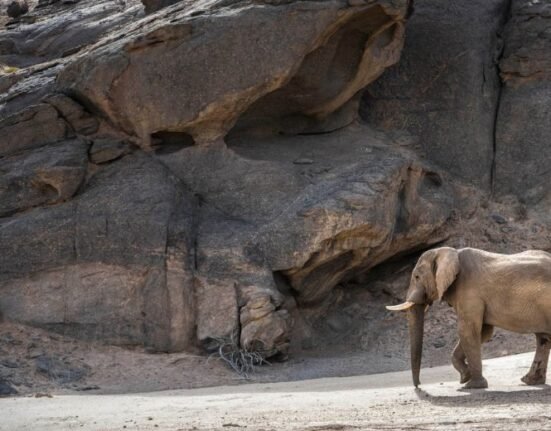The United Nations Conference on Biological Diversity (COP15)is being held in Montreal, Canada, from December 7-19.
According to the World Wildlife Fund for Nature’s “Living Planet 2022: Building a Nature Positive Society” report published in October, we as a human species, have been doing a horrible job of taking care of the rest of the world’s living creatures. This meeting aims to give biodiversity and ecosystems the same international protection as the climate. The latest research indicates that we are rapidly approaching a tipping point beyond which our tropical rainforest will no longer function. We need nature positive by 2030 – which means more nature by the end of this decade than at its start. A net-positive biodiversity by 2030 represents the compass to guide
us towards a safe future for humanity,
Researchers of the WWF report say that in a short span of 48 years between 1970 and 2018, an estimated two-thirds of all wildlife populations have disappeared from the earth. They examined over 32,000 different ecosystems representing 5,200 distinct species.
Latin America shows the greatest regional decline in average population abundance (94%), while freshwater species populations have seen the greatest overall global decline (83%). We have already lost 17% of the original extent of the forest, and an additional 17% has been degraded.
Rainfed agriculture uses 80% of global croplands and is responsible for 60% of all food produced, says the report. Forest destruction could therefore put the food security of billions of people and the livelihoods
of millions at risk. This risk is compounded by impacts from climate change that can make droughts more frequent.
Forests store more carbon than all the Earth’s exploitable oil, gas and coal and between 2001 and 2019 forests absorbed 7.6 gigatonnes of CO2 from the atmosphere every year or about 18% of all human-caused carbon emissions. Yet every year, we lose roughly 10 million hectares of forests – an area about the size of Portugal. Deforestation, especially in the tropics, causes carbon emissions and leads to warmer, drier local climates. For example, clearing the tropical forests in Central Africa or South America could increase average daytime temperatures by 7-8oC and decrease rainfall across those regions by around 15%.
Global Sustainable Development Goal of halting deforestation and restoring and sustainably managing forests therefore plays an important role in protecting biodiversity and in, limiting global warming, adapting to climate change, and providing valuable water for our food system
UN events on biodiversity have yielded nothing positive
But the events preceding this year’s COP15 Conference on Biological Diversity, set to begin tomorrow, might be the most tumultuous event of its kind.
In August 2022, the United Nations’ Intergovernmental Conference focused on writing a new maritime biodiversity treaty that ended in failure.
In November, the United Nations COP27 Climate Change event also ended with no conclusive agreements on curbing deforestation, maritime activities or the degradation of arable land.
Another UN-sponsored event on curbing plastic use was a non-event. Over 2,000 delegates from 160 countries met on behalf of the UN’s Intergovernmental Negotiating Committee (INC), in Punta del Este, Uruguay. The goal was to create a draft of an international treaty for managing toxic plastic waste. But a scattered agreement between 40 countries for mandatory cut down on plastic use was drafted with the rest just joining as voluntary ones.
“The United States is committed to working with other governments and stakeholders throughout the INC process to develop an ambitious, innovative and country-driven global agreement,” the U.S. State Department said in a statement issued on December 2.
UN COP15 goals on biodiversity
The coming UN COP15 Biodiversity Conference beginning will bring over 10,000 governmental officials, scientists, researchers, formal non-governmental organizations (NGOs), and activists from across the planet to define the framework for new and revised initiatives designed to save biodiversity on the planet.
The attendees will need to address the Aichi Biodiversity Targets, a set of five goals previous attendees put together as a framework for addressing the biodiversity crisis. They are:
- Strategic Goal A: Address the underlying causes of biodiversity loss by mainstreaming biodiversity across government and society
- Strategic Goal B: Reduce the direct pressures on biodiversity and promote sustainable use
- Strategic Goal C: To improve the status of biodiversity by safeguarding ecosystems, species and genetic diversity
- Strategic Goal D: Enhance the benefits to all from biodiversity and ecosystem services
- Strategic Goal E: Enhance implementation through participatory planning, knowledge management and capacity building
The United Nations will be streaming the event live at (1827) WG2020-5 – YouTube. All times are U.S. Eastern Time.



